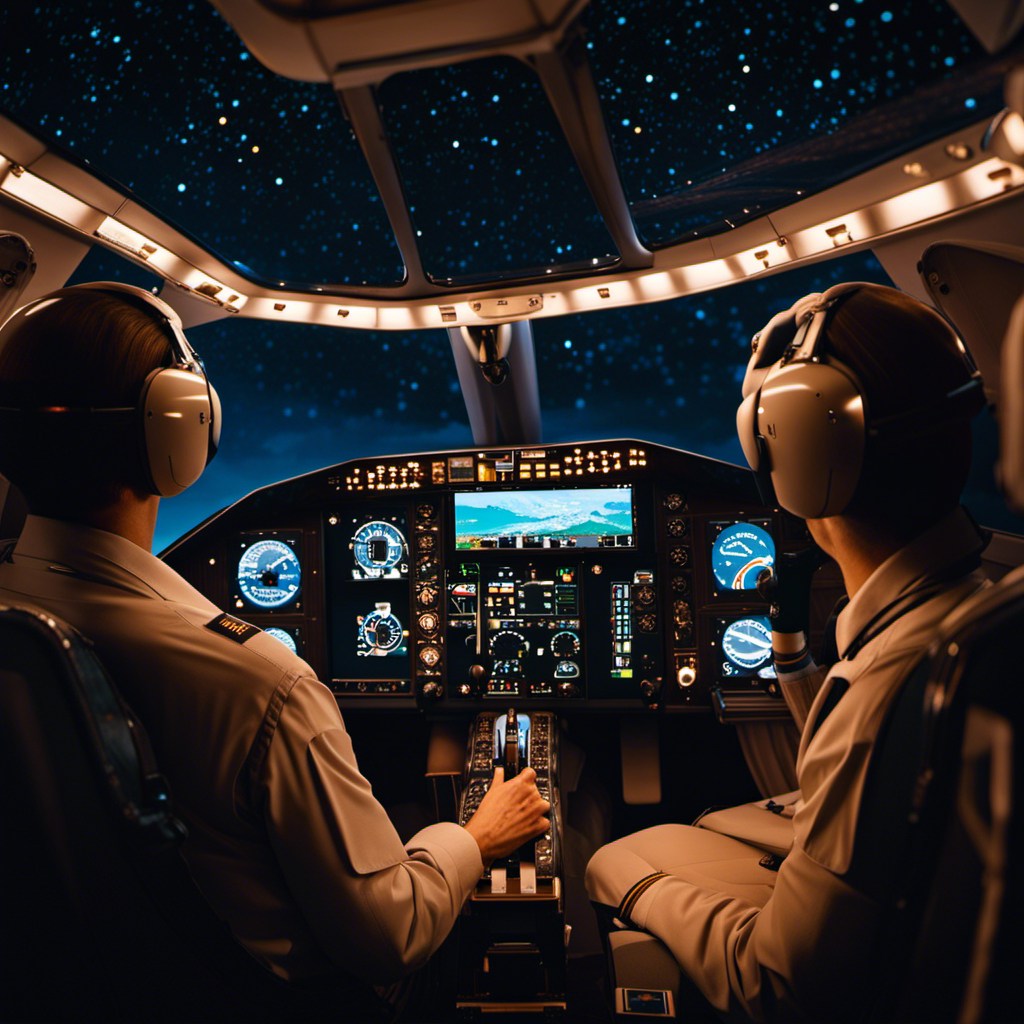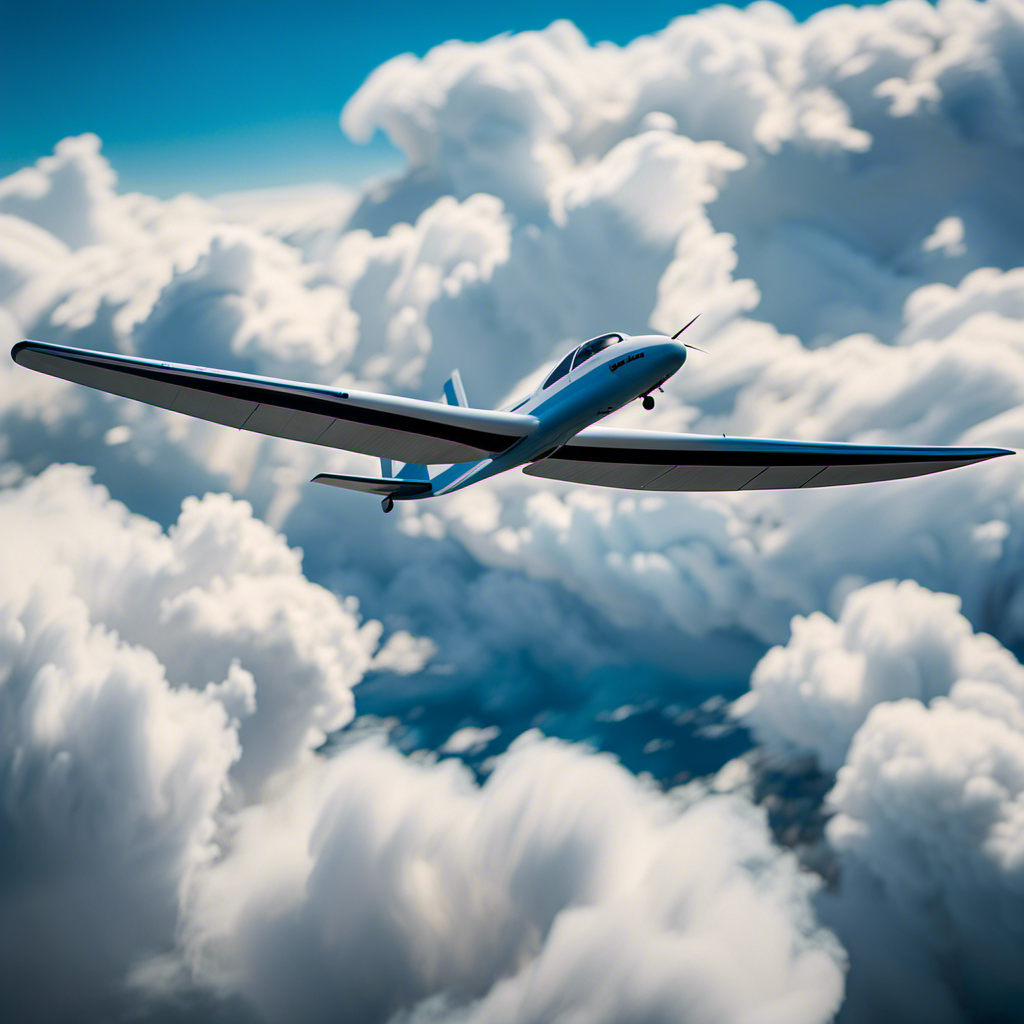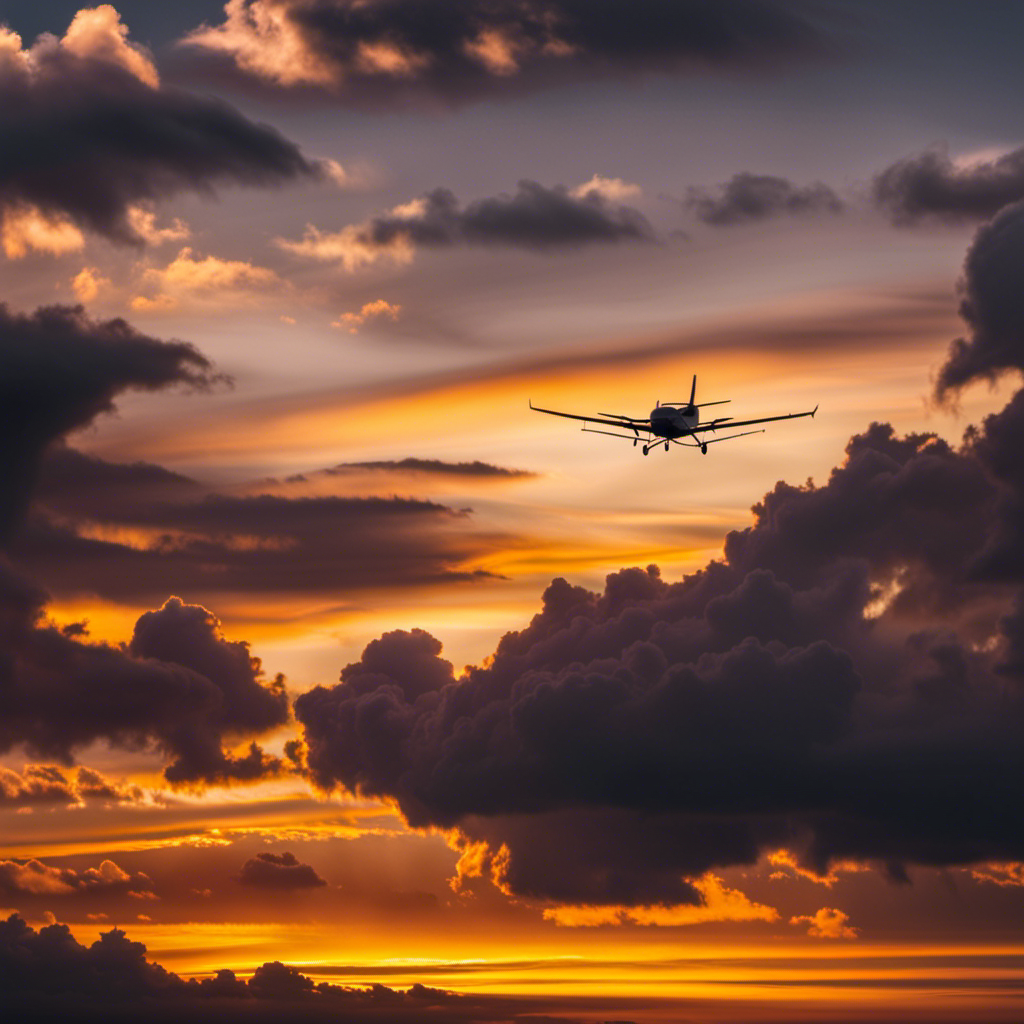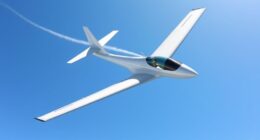It might surprise you to learn that pilots do, in fact, take naps during flights. Drawing from my own time as a pilot, I cannot emphasize enough the importance of getting adequate rest to ensure safety while flying.
In this article, we will delve into the world of pilot fatigue, exploring regulations and guidelines for pilot rest, as well as the role of co-pilots in ensuring alertness.
We will also discuss the tools and techniques pilots use to manage sleep during long flights, and the impact of sleep deprivation on performance.
So, let’s debunk some common myths and misconceptions about pilot sleep patterns and uncover the truth about in-flight rest.
Key Takeaways
- Pilots are allowed to take short power naps during long flights through controlled rest periods.
- Guidelines for rest periods are in place based on flight duration, ensuring pilots get adequate rest between flights.
- Strict regulations prioritize pilot rest to minimize the risk of in-flight fatigue and maintain the highest level of safety for pilots and passengers.
- Sleep deprivation affects cognitive functions, reaction times, and decision-making abilities, making adequate rest essential for pilot performance and safe aircraft operation.
The Importance of Rest for Pilots
You should prioritize rest as a pilot because it is important for your overall well-being and performance in the cockpit. As a pilot, our sleep patterns can often be irregular due to the demands of our profession. Long-haul flights, time zone changes, and irregular work schedules can disrupt our natural sleep-wake cycle. However, getting enough rest is crucial for our physical and mental well-being. Lack of sleep can lead to fatigue, decreased alertness, and impaired decision-making abilities, which can be dangerous in the cockpit.
Adequate rest allows us to be more focused, alert, and responsive during flights, ensuring the safety of ourselves, our crew, and our passengers. Understanding the importance of rest is the first step in combating pilot fatigue and maintaining optimal performance.
Transitioning into the next section, it is important to delve deeper into the factors contributing to pilot fatigue and how it can be managed effectively.
Understanding Pilot Fatigue
Understanding how tired pilots can get is crucial in order to ensure the safety of everyone on board. Pilots have unique sleep patterns due to the nature of their work. They often have irregular schedules, working long hours and crossing multiple time zones. This can lead to sleep deprivation, which can have detrimental effects on their performance.
Lack of sleep can impair cognitive function, decision-making abilities, and reaction times. It can also increase the risk of errors and accidents. Pilots need to be alert and focused at all times, especially during critical phases of flight. Therefore, it is essential for airlines and regulatory bodies to establish regulations and guidelines for pilot rest.
Regulations and Guidelines for Pilot Rest
Following regulations and guidelines for pilot rest is crucial to ensure the safety of everyone on board. As pilots, we are required to comply with specific regulations that outline the minimum rest periods and maximum flight hours allowed. These regulations are put in place to prioritize pilot well-being and prevent fatigue-related incidents.
Here are some key aspects of regulations compliance and pilot well-being:
-
Minimum rest periods: Regulations specify the minimum amount of rest time required between flights to ensure pilots have adequate time to recover and recharge.
-
Maximum flight hours: There are also limitations on the maximum number of flight hours per day or week to prevent pilots from becoming excessively fatigued.
-
Fatigue management programs: Airlines implement fatigue management programs to monitor and mitigate the risks associated with pilot fatigue.
-
Education and awareness: Pilots receive training and education on recognizing the signs of fatigue and implementing effective fatigue countermeasures.
By adhering to these regulations and guidelines, pilots can maintain their well-being and ensure the safety of everyone on board.
Speaking of safety, let’s now explore the role of co-pilots in maintaining it.
The Role of Co-Pilots in Maintaining Safety
Co-pilots play a critical role in ensuring the safety of everyone on board the aircraft. As a co-pilot myself, I understand the importance of managing pilot workload and following communication protocols.
During flights, the workload can be overwhelming for a single pilot, especially during critical phases such as takeoff and landing. This is where the co-pilot steps in to assist, sharing the workload and allowing the pilot to focus on flying the aircraft.
Additionally, effective communication between the pilot and co-pilot is essential for a safe and efficient flight. We use standardized communication protocols to ensure clear and concise exchanges of information and instructions. By working together as a team, co-pilots contribute significantly to maintaining safety in the cockpit.
Speaking of safety, let’s now explore how pilots manage sleep during long flights.
How Pilots Manage Sleep during Long Flights
During long flights, pilots often find ways to rest and recharge in order to maintain alertness and ensure the safety of the aircraft. Effective sleep management strategies are crucial for pilots to combat fatigue and maintain optimal performance. Here are three important aspects of pilot sleep patterns and sleep management strategies:
-
Nap breaks: Pilots may take short naps during long-haul flights to combat fatigue. These power naps, typically lasting around 20-30 minutes, can help improve alertness and cognitive functioning.
-
Sleep schedules: Pilots follow carefully planned sleep schedules to ensure they get enough rest before and during flights. This includes prioritizing quality sleep during off-duty periods and avoiding activities that can disrupt their sleep patterns.
-
Sleep environments: Creating a conducive sleep environment in the cockpit is essential. Pilots use specially designed sleep seats or rest areas equipped with reclining seats, dim lighting, and reduced noise levels to facilitate restful sleep.
The Use of Controlled Rest in the Cockpit
After discussing how pilots manage sleep during long flights, it is important to delve into the use of controlled rest in the cockpit.
Controlled rest, also known as strategic napping, is a technique that allows pilots to take short periods of sleep during flight to combat pilot fatigue. These rest periods are carefully planned and coordinated with the other pilot to ensure that one pilot is always awake and alert.
The concept behind controlled rest is that even a short period of sleep can provide significant benefits in terms of alertness and cognitive performance. Studies have shown that strategic napping can improve a pilot’s ability to stay focused and make critical decisions.
By implementing controlled rest, airlines aim to reduce the risk of pilot fatigue and enhance flight safety.
Now, let’s explore the tools and techniques pilots use to maintain their alertness during long flights.
Tools and Techniques for Maintaining Alertness
To stay alert during long flights, you can use tools like caffeine and techniques such as stretching and staying hydrated.
Maintaining alertness is crucial for pilots to ensure the safety of their passengers and themselves. Caffeine, found in coffee or energy drinks, can help combat fatigue and improve cognitive function.
Stretching exercises help increase blood flow and reduce muscle tension, keeping pilots more alert and focused.
Additionally, staying hydrated is essential for optimal brain function and preventing dehydration-induced fatigue.
By incorporating these tools and techniques into their routine, pilots can better manage their sleep and maintain alertness throughout their flights.
However, it is important to recognize the impact of sleep deprivation on pilot performance, as inadequate sleep can impair cognitive abilities and reaction times, posing serious risks during flight operations.
The Impact of Sleep Deprivation on Pilot Performance
Make sure you prioritize getting enough rest before your flight, as sleep deprivation can significantly impair your performance as a pilot. The impact of sleep deprivation on pilots is well-documented and can have serious consequences.
When pilots are sleep deprived, their cognitive functions, attention span, and decision-making abilities are all affected. This can lead to slower reaction times, decreased situational awareness, and increased errors in judgment. Research has shown that sleep deprivation can have similar effects on pilots as alcohol intoxication, making it crucial for pilots to be well-rested before taking control of an aircraft.
Adequate rest is essential for pilots to ensure they are alert, focused, and able to safely operate the aircraft.
Transitioning into the subsequent section about safety measures to prevent in-flight fatigue, it is important for pilots to implement strategies that promote proper rest and mitigate the risks associated with sleep deprivation.
Safety Measures to Prevent In-flight Fatigue
Implementing safety measures can help prevent in-flight fatigue and ensure pilots are well-rested during their flights. In order to promote pilot well-being and prevent exhaustion, airlines have implemented various strategies to allow for in-flight rest.
One common practice is the use of controlled rest periods, where pilots can take short naps during long flights. These rest periods are carefully planned and coordinated to ensure that there is always a pilot at the controls.
Additionally, airlines have implemented duty time limitations and rest requirements to ensure that pilots have adequate time to recover between flights. This includes factors such as maximum flight hours, minimum rest periods, and restrictions on consecutive duty days.
By prioritizing pilot rest and implementing these safety measures, airlines aim to minimize the risk of in-flight fatigue and maintain the highest level of safety for both pilots and passengers.
Transitioning into the subsequent section about common myths and misconceptions about pilot sleep patterns, it is important to address some misunderstandings that exist regarding pilot rest.
Common Myths and Misconceptions about Pilot Sleep Patterns
Contrary to popular belief, pilots are not able to easily fall asleep during a flight. There are several common misconceptions about pilot sleep patterns that need to be addressed. One of the biggest misconceptions is that pilots can sleep whenever they want during a flight. In reality, pilots have strict regulations and procedures in place to ensure they are well-rested and alert while flying.
Another misconception is that pilots can sleep for long periods of time during a flight. In truth, pilots are only allowed to take short power naps, usually no longer than 20 minutes, to refresh themselves. This allows them to maintain their focus and attentiveness throughout the flight.
To give you a better understanding of pilot sleep patterns, here is a table outlining the general guidelines for rest periods during different flight durations:
| Flight Duration | Maximum Duty Period | Minimum Rest Period |
|---|---|---|
| Less than 9 hours | 14 hours | 10 hours |
| 9-12 hours | 16 hours | 12 hours |
| More than 12 hours | 18 hours | 14 hours |
As you can see, there are strict regulations in place to ensure pilots get adequate rest between flights. These guidelines are crucial for maintaining the safety and well-being of both the pilots and passengers. So, the next time you fly, rest assured that your pilots are well-rested and ready to safely take you to your destination.
Frequently Asked Questions
How many hours of rest do pilots typically get between flights?
Pilots’ sleep patterns and rest regulations ensure they get adequate rest between flights. The number of hours of rest varies depending on the flight time, but it typically ranges from 8 to 10 hours.
Are pilots allowed to take naps during long flights?
During long flights, pilots are allowed to take naps to combat sleep deprivation. However, pilot rest regulations ensure that they still get enough rest to maintain optimal performance and ensure passenger safety.
What are the consequences of pilot fatigue on flight safety?
The consequences of pilot fatigue and the impact of sleep deprivation on flight safety are significant. Fatigue can impair cognitive function, reaction time, and decision-making abilities, increasing the risk of errors and accidents.
Do pilots have any strategies for managing sleep during irregular working hours?
Pilots have various strategies for managing sleep during irregular working hours. These strategies include adjusting sleep schedules, utilizing short naps, and implementing lifestyle changes to combat jet lag. Irregular sleep can negatively impact a pilot’s health and well-being.
Are there any technological advancements or tools that help pilots stay alert during flights?
Technological advancements and tools play a crucial role in helping pilots stay alert during flights. For instance, fatigue monitoring systems track pilot alertness, while cockpit automation assists in reducing workload and enhancing situational awareness.
Conclusion
In conclusion, the importance of rest for pilots cannot be overstated. Just like a weary traveler on a long journey, pilots need adequate sleep to navigate the skies safely. Understanding the effects of pilot fatigue and implementing regulations and guidelines for rest is crucial in maintaining aviation safety.
Co-pilots play a vital role in supporting their colleagues and ensuring alertness throughout flights. By utilizing tools and techniques to manage sleep and prevent in-flight fatigue, pilots can perform at their best.
Sleep deprivation can have a significant impact on pilot performance, underscoring the need for safety measures to prioritize rest. Let’s debunk common myths and misconceptions about pilot sleep patterns and appreciate the dedication it takes to keep our skies secure.
Orion, better known as “Jetstream,” is the voice that brings the stories of the skies to life. His fascination with aviation began at a young age, sparked by his father’s tales of flying and adventure. Orion’s journey into the world of gliding was serendipitous, and from the moment he took his first glider flight, he knew he had found his calling.










